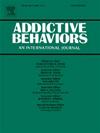每天使用电子烟的人在电子烟设备、尼古丁浓度和口味之间的切换:一项为期12个月的纵向研究的结果
IF 3.7
2区 医学
Q1 PSYCHOLOGY, CLINICAL
引用次数: 0
摘要
电子烟在产品特性(如设备类型、尼古丁浓度和风味)上有很大差异。人们对使用电子烟的人如何在不同特征的产品之间切换知之甚少。我们在一年多的时间里追踪了每天吸电子烟的人使用的产品特征的稳定性/可变性。126名参与者每天吸电子烟,不使用其他尼古丁产品,其中80人完成了12个月的研究访问。参与者在每次访问时报告过去30天内使用的设备类型、尼古丁浓度和口味。参与者还被要求每次访问时携带电子烟设备和电子烟油。研究人员为参与者携带的产品拍照,并对产品特征进行分类。结果在一年多的时间里,35.0%的参与者没有改变设备类型、尼古丁浓度或口味类型。然而,35%的参与者改变了设备类型,31.3%的人改变了尼古丁浓度,46.3%的人至少改变了一次口味。设备类型最常见的变化是从开放式系统设备切换到封闭式系统设备(67.9%)。尼古丁从低到高的转换率(≤24 vs. >;24 mg/mL)比相反(56.6%比43.4%)更常见。最常见的口味变化是在水果/甜和混合口味之间切换(水果/甜加冷却添加剂,占口味切换事件的75.7%)。大多数研究参与者在12个月的研究期间至少改变了一次产品特性。使用者最常更换口味,最不常更换尼古丁浓度。未来的研究应该考虑使用电子烟的人的产品使用模式的可变性。本文章由计算机程序翻译,如有差异,请以英文原文为准。
Switching between vaping devices, nicotine concentration, and flavors among people who use e-cigarettes daily: Results from a 12-Month longitudinal study
Background
E-cigarettes vary widely in product characteristics (e.g., device type, nicotine concentration, and flavor). Little is known about how people who use e-cigarettes switch between products with different characteristics. We tracked the stability/variability in characteristics of products used by individuals who vaped e-cigarettes daily over one year.
Methods
Of 126 enrolled participants who vaped e-cigarettes daily and did not use other nicotine products, 80 completed 12 monthly study visits. Participants reported device type, nicotine concentration, and flavors used in the past 30 days at each visit. Participants were also asked to bring e-cigarette devices and e-liquids to each visit. Study staff took pictures of products carried by participants and categorized product characteristics.
Results
Over one year, 35.0 % of participants did not change device type, nicotine concentration, or flavor type. However, 35 % of participants changed device type, 31.3 % changed nicotine concentration, and 46.3 % changed flavor at least once. The most common change in device type was switching from open to closed system devices (67.9 %). The rate of switching from low to high nicotine (≤24 vs. > 24 mg/mL) was more common than the reverse (56.6 % vs. 43.4 %). The most common change in flavor was switching between Fruit/Sweet and Hybrid (Fruit/Sweet with a cooling additive, 75.7 % of flavor switching events).
Conclusions
Most study participants switched one product characteristic at least once during a 12-month study period. Users most frequently switched flavors and least frequently switched nicotine concentrations. Future studies should consider the variability of product use patterns among people who use e-cigarettes.
求助全文
通过发布文献求助,成功后即可免费获取论文全文。
去求助
来源期刊

Addictive behaviors
医学-药物滥用
CiteScore
8.40
自引率
4.50%
发文量
283
审稿时长
46 days
期刊介绍:
Addictive Behaviors is an international peer-reviewed journal publishing high quality human research on addictive behaviors and disorders since 1975. The journal accepts submissions of full-length papers and short communications on substance-related addictions such as the abuse of alcohol, drugs and nicotine, and behavioral addictions involving gambling and technology. We primarily publish behavioral and psychosocial research but our articles span the fields of psychology, sociology, psychiatry, epidemiology, social policy, medicine, pharmacology and neuroscience. While theoretical orientations are diverse, the emphasis of the journal is primarily empirical. That is, sound experimental design combined with valid, reliable assessment and evaluation procedures are a requisite for acceptance. However, innovative and empirically oriented case studies that might encourage new lines of inquiry are accepted as well. Studies that clearly contribute to current knowledge of etiology, prevention, social policy or treatment are given priority. Scholarly commentaries on topical issues, systematic reviews, and mini reviews are encouraged. We especially welcome multimedia papers that incorporate video or audio components to better display methodology or findings.
Studies can also be submitted to Addictive Behaviors? companion title, the open access journal Addictive Behaviors Reports, which has a particular interest in ''non-traditional'', innovative and empirically-oriented research such as negative/null data papers, replication studies, case reports on novel treatments, and cross-cultural research.
 求助内容:
求助内容: 应助结果提醒方式:
应助结果提醒方式:


